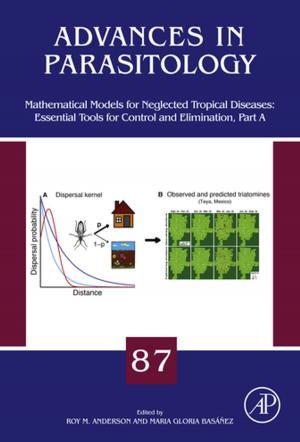Food Microstructure and Its Relationship with Quality and Stability
Nonfiction, Science & Nature, Technology, Food Industry & Science| Author: | ISBN: | 9780081017661 | |
| Publisher: | Elsevier Science | Publication: | December 20, 2017 |
| Imprint: | Woodhead Publishing | Language: | English |
| Author: | |
| ISBN: | 9780081017661 |
| Publisher: | Elsevier Science |
| Publication: | December 20, 2017 |
| Imprint: | Woodhead Publishing |
| Language: | English |
Food Microstructure and Its Relationship with Quality and Stability is a comprehensive overview of the effects that the properties of the underlying structures of food have on its perceived quality to the consumer.
The book's first section consists of chapters outlining the fundamentals of food microstructure, food composition, molecular mobility of various food constituents, and their relationships with food quality and stability. The role of various processing technologies in the production of specific microstructures for enhanced quality and stability is outlined.
The second part of the book consists of various chapters devoted to microstructures, constituents and their relationship with quality, functionality, and stability of selected foods, for example, food hydrocolloids, frozen seafood, dried foods, extruded products, and dietary fibers.
This information is of paramount importance for both academic researchers in the areas of food quality, preservation, and stability, as well as for food developers and processors.
- Brings together leading experts from around the world to provide the latest information on a topic essential to the quality of food products
- Includes dedicated chapters covering the microstructure of specific products and its relationship to quality and stability, making this book ideal for those working in industry
- Provides a single reference source for a topic of great importance to a number of fields within both academic and industrial food sciences – food quality, stability, processing, and engineering
Food Microstructure and Its Relationship with Quality and Stability is a comprehensive overview of the effects that the properties of the underlying structures of food have on its perceived quality to the consumer.
The book's first section consists of chapters outlining the fundamentals of food microstructure, food composition, molecular mobility of various food constituents, and their relationships with food quality and stability. The role of various processing technologies in the production of specific microstructures for enhanced quality and stability is outlined.
The second part of the book consists of various chapters devoted to microstructures, constituents and their relationship with quality, functionality, and stability of selected foods, for example, food hydrocolloids, frozen seafood, dried foods, extruded products, and dietary fibers.
This information is of paramount importance for both academic researchers in the areas of food quality, preservation, and stability, as well as for food developers and processors.
- Brings together leading experts from around the world to provide the latest information on a topic essential to the quality of food products
- Includes dedicated chapters covering the microstructure of specific products and its relationship to quality and stability, making this book ideal for those working in industry
- Provides a single reference source for a topic of great importance to a number of fields within both academic and industrial food sciences – food quality, stability, processing, and engineering















